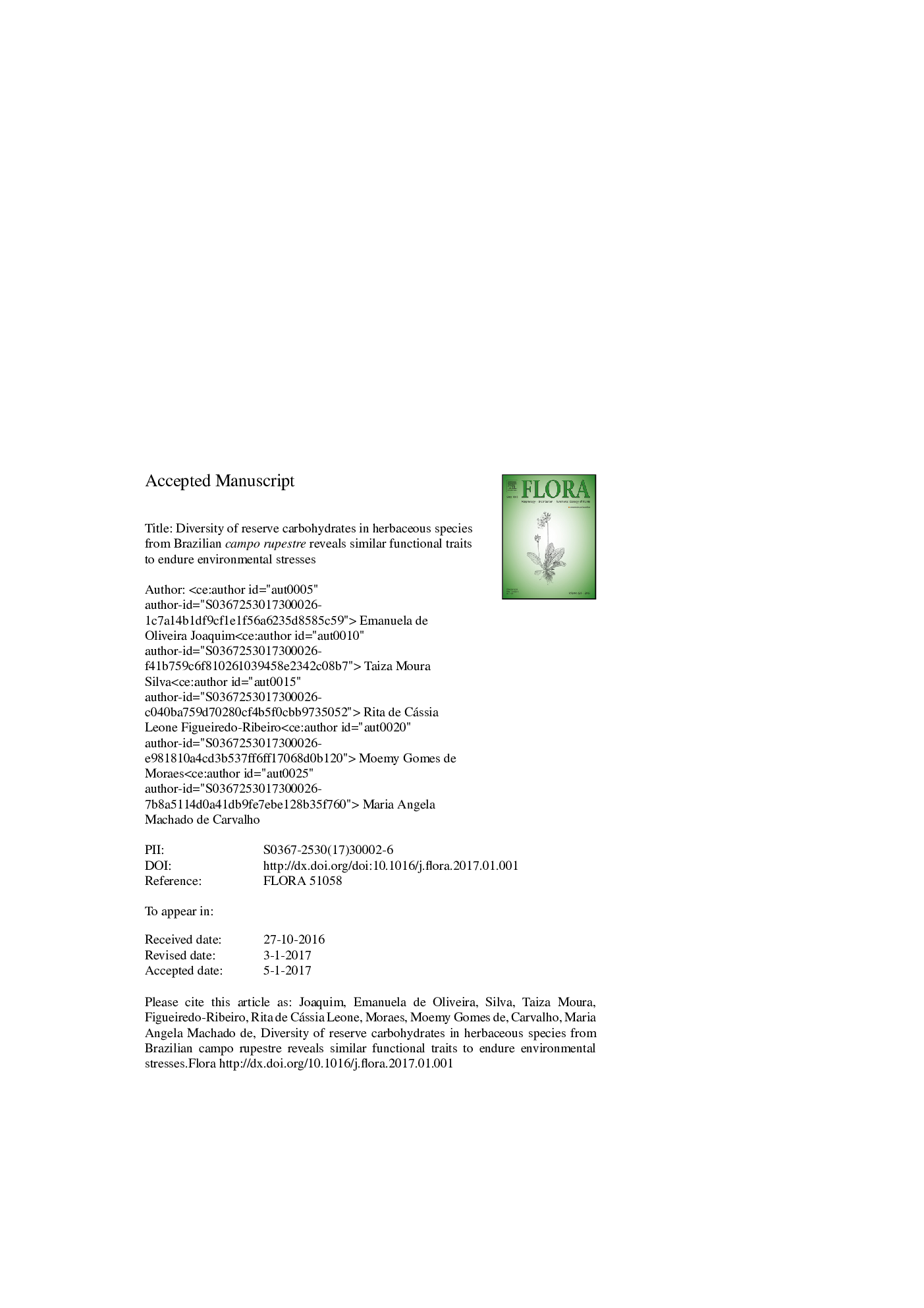| Article ID | Journal | Published Year | Pages | File Type |
|---|---|---|---|---|
| 8470238 | Flora - Morphology, Distribution, Functional Ecology of Plants | 2018 | 36 Pages |
Abstract
Plants from Brazilian campo rupestre grow mostly on rocky outcrops, with acidic and nutrient-poor soils, seasonal water scarcity and occasional fires. The herbaceous species growing in campo rupestre allocate a great proportion of their biomass to thickened underground organs bearing buds and accumulating carbohydrates. These traits are essential to sustain resprouting after adverse environmental conditions. In this study we examined carbohydrate levels and composition in different organs of 26 herbaceous species, with emphasis on reserve underground organs, and showed fructans as the main storage carbohydrates in all studied species of Asteraceae and Amaranthaceae. High average concentrations of total fructose were found in Gomphrena marginata (Amaranthaceae), Richterago polymorpha and Lessingianthus psilophyllus (Asteraceae), constituting respectively 30, 27 and 26% of the underground organ dry mass. All studied Asteraceae presented the inulin homologous series whereas Gomphrena agrestis and G. marginata (Amaranthaceae) presented the levan series. Vellozia minima, Vellozia epidendroides and Barbacenia plantaginea (Velloziaceae) presented the raffinose family oligosaccharides that, similar to fructans, are known to protect plants against several strains, including drought. Starch was found in species from six different families with values ranging from 0.8% to 38% on a dry mass basis. The diversity of carbohydrates in underground organs suggests they play similar roles in conferring tolerance to environmental disturbances in addition to supporting phenological events.
Related Topics
Life Sciences
Agricultural and Biological Sciences
Ecology, Evolution, Behavior and Systematics
Authors
Emanuela de Oliveira Joaquim, Taiza Moura Silva, Rita de Cássia Leone Figueiredo-Ribeiro, Moemy Gomes de Moraes, Maria Angela Machado de Carvalho,
